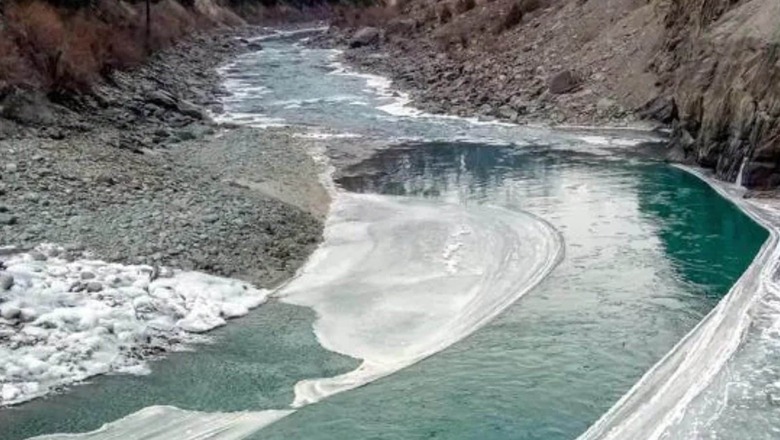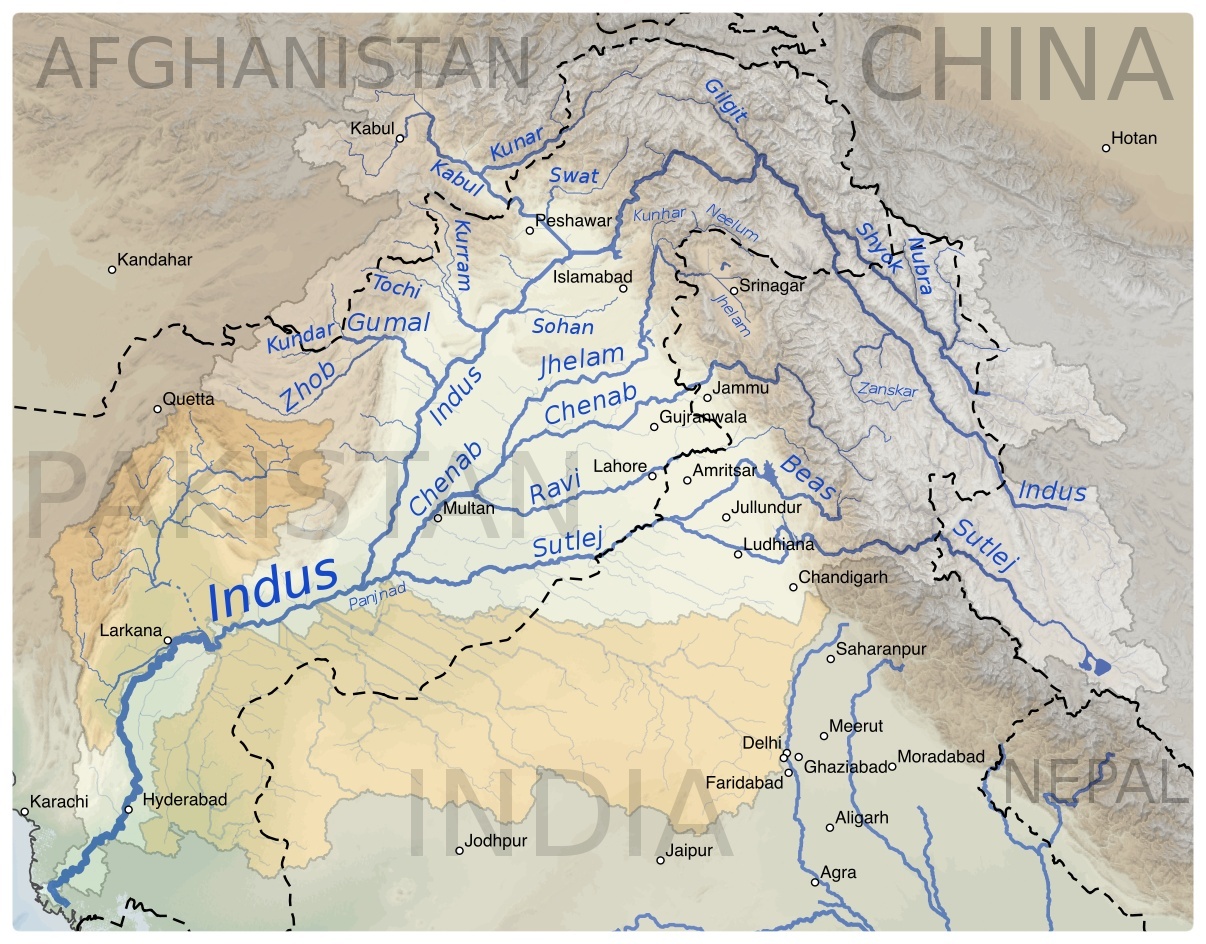
views
We seem to be heading for Indus Waters Treaty (IWT) 2.0, a newer version, after India sent a notice to Pakistan on January 25, 2023. The Indian side has neither released, nor leaked, the contents of the official notice. The Pakistan government, too, has kept silent so far, preferring to choose discretion over valour and has not released the notice in the press either. However, some articles have started appearing in the newspapers of both countries regarding the notice.
If we scan the Pakistani press and read their leading newspapers like Dawn, The News International, The Friday Times etc, we find that they have started discussing the treaty, the implications of India’s notice and what it can mean for Pakistan. The point being made repeatedly in most papers is that the treaty can’t be changed, in a very unconvincing manner.
Saving the IWT, Weaponising water warfare and India’s notice are just three of the headings that appeared in Pakistani papers during the past few days. In an article in Dawn, published on February 18, Pakistan’s former Law Minister Ahmer Bilal Soofi said, “Article 12(3) of the treaty allows the treaty to be modified and Article 12(4) allows it to be terminated but only by agreeing to another stand-alone treaty.”
This is the crux of the matter, that the treaty can be amended under Article 12 (3). However, the prevailing narrative about the treaty, carefully constructed by Pakistan and its lackeys, is that the treaty is eternal and can’t be changed. It is such a falsehood that it needs to be dismissed out of hand and thrown into the dustbin straightaway.
By now, we all know that India’s notice has been sent under Article 12 (3). What does this article say? We hereby reproduce verbatim what Article 12 (3) reads. It says: (3) The provisions of this Treaty may from time to time be modified by a duly ratified treaty concluded for that purpose between the two Governments.
From a cursory reading, it thus becomes clear that the treaty can not only be amended, but repeatedly (from time to time), by mutual consultations.
It is a different matter that right from its signing on September 19, 1960, till January 25, 2023, a period of over 62 years, India never even once evoked this article and clause. This right to seek amendment has always existed specifically within the text of the treaty, clearly defined in Article 12 (3). It is Pakistan’s intransigence vis-à-vis different IWT provisions that has forced India to move towards a revision of the treaty.
Some reports have hinted at Pakistan not responding to India’s notice, after the mandated 90-day period. But for how long? Will that position be tenable, sustainable, useful and eternal? Technically and legally, under the relevant provisions of the treaty, Pakistan has to respond within 90 days to India’s notice. The notice is truly unprecedented but the Modi government is on very sound “legal and technical grounds.” This is why there is hushed silence on the Pakistani side officially.
In a recent article, titled Indus Waters Treaty: Opening the water front, Sushant Sareen of the Observer Research Foundation wrote that India has sound “legal and technical grounds” for seeking amendment of the treaty. Incidentally, the Preamble of the treaty says that it is being signed for “attaining the most complete and satisfactory utilisation of the waters of the Indus system of rivers” and “in a spirit of goodwill and friendship.” This goodwill, friendship, and spirit of cooperation that the Preamble talks of are empty words today because of Pakistan’s behaviour over the last six decades.
Article 12 is titled “Final Provisions” and has four clauses. We reproduce it verbatim hereunder.
- This Treaty consists of the Preamble, the Articles hereof and Annexures A to H hereto, and may be cited as “The Indus Waters Treaty 1960.”
- This Treaty shall be ratified and the ratifications thereof shall be exchanged in New Delhi. It shall enter into force upon the exchange of ratifications, and will then take effect retrospectively from the first of April 1960.
- The provisions of this Treaty may from time to time be modified by a duly ratified treaty concluded for that purpose between the two Governments.
- The provisions of this Treaty, or the provisions of this Treaty as modified under the provisions of Paragraph (3), shall continue in force until terminated by a duly ratified treaty concluded for that purpose between the two Governments.
What is the cause for India’s apparent anger for seeking modification of the treaty? If truth be told, it is Pakistan’s fancy interpretation of the written word under Annexure D of the treaty. Incidentally, this Annexure D deals with the ‘Generation of Hydro-Electric Power by India on the Western Rivers.’ It is Pakistan’s objections to the 330 MW Kishenganga and 850 MW Ratle Hydro Electric Project, located on river Chenab, which have precipitated matters.

What is the mechanism to resolve any issues that the two sides may face? Well, this is defined under Article IX of the treaty wherein procedures for “Settlement of Differences and Disputes” have been given. It is a step-wise escalation that the treaty talks of. Initially, the Permanent Indus Commission (PIC), comprising Indus Commissioners of the two nations, come together and try to resolve a ‘question.’ If they fail, it escalates to become a ‘difference,’ as per the treaty. The ‘difference’ is then sent to a ‘Neutral Expert (NE)’ who hears arguments from both sides and tries to settle the issue at stake. If the ‘Neutral Expert’ fails to satisfy both parties, it escalates to the next level of being declared a ‘dispute.’ A ‘dispute’ is then the subject matter of adjudication by the ‘Court of Arbitration (COA).’ So, broadly, it is in a linear fashion, 1, 2 and 3, that the parties should proceed.
Pakistan has, however, short-circuited the entire process and invoked the jurisdiction of a Neutral Expert and the Court of Arbitration simultaneously. India has questioned this on the basis of genuine concerns regarding the outcomes. It has pointed out that the NE and COA can come to different conclusions, which may be diametrically opposite to one another. In that case, how will the issues be resolved between the two parties? Put in simple words, India has been stressing that for resolving any issues, step 1 has to be PIC, step 2 has to be NE and step 3 has to be COA, in a chronological fashion. Since Pakistan has deviated from this, India has termed it a “material breach,” something the former does not agree to.
For years, we did not hear much about the IWT but it appears we will continue to hear about it from now onwards.
The author is a veteran journalist from Jammu and Kashmir. Views expressed are personal.
Read all the Latest Opinions here




















Comments
0 comment